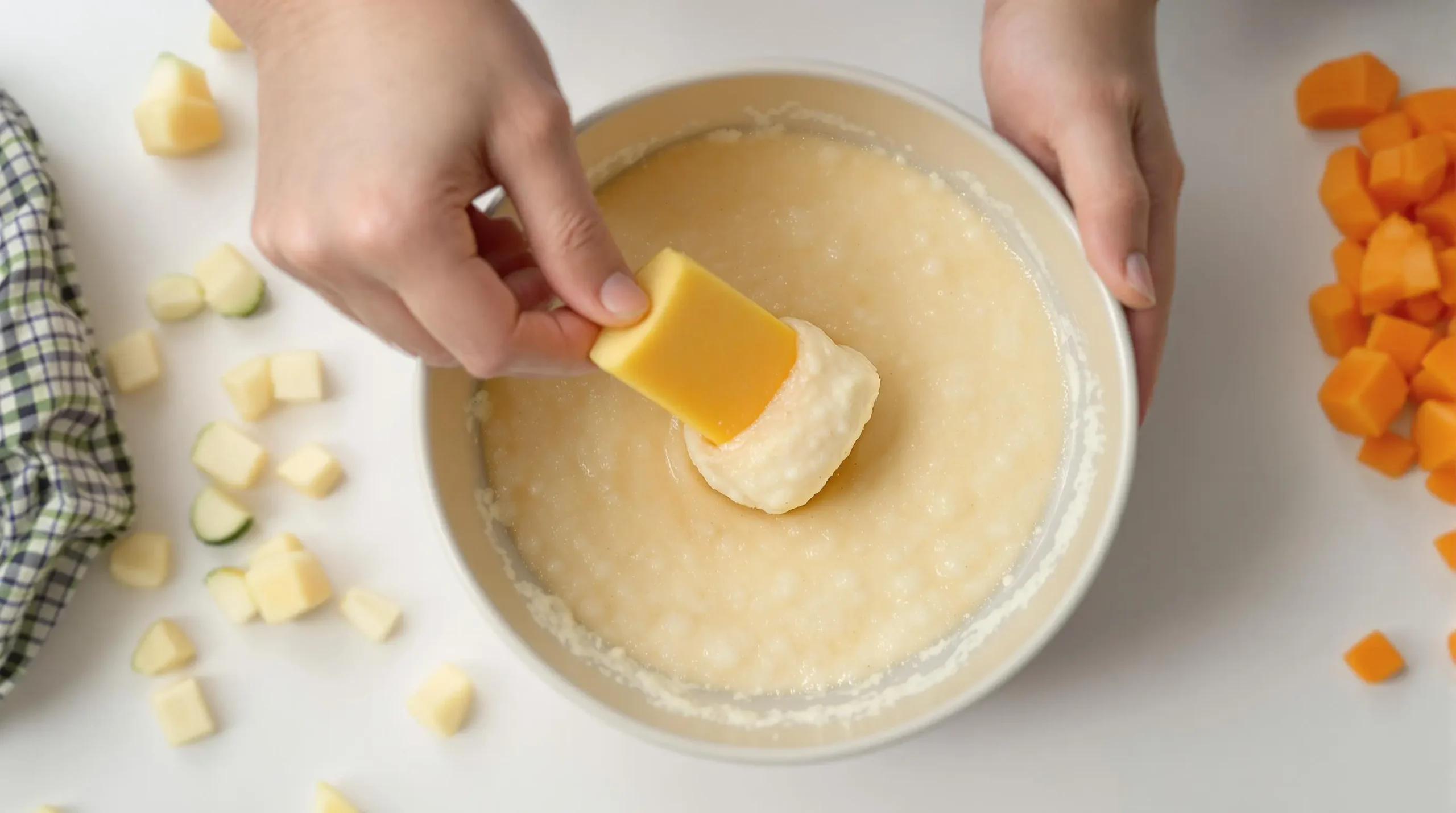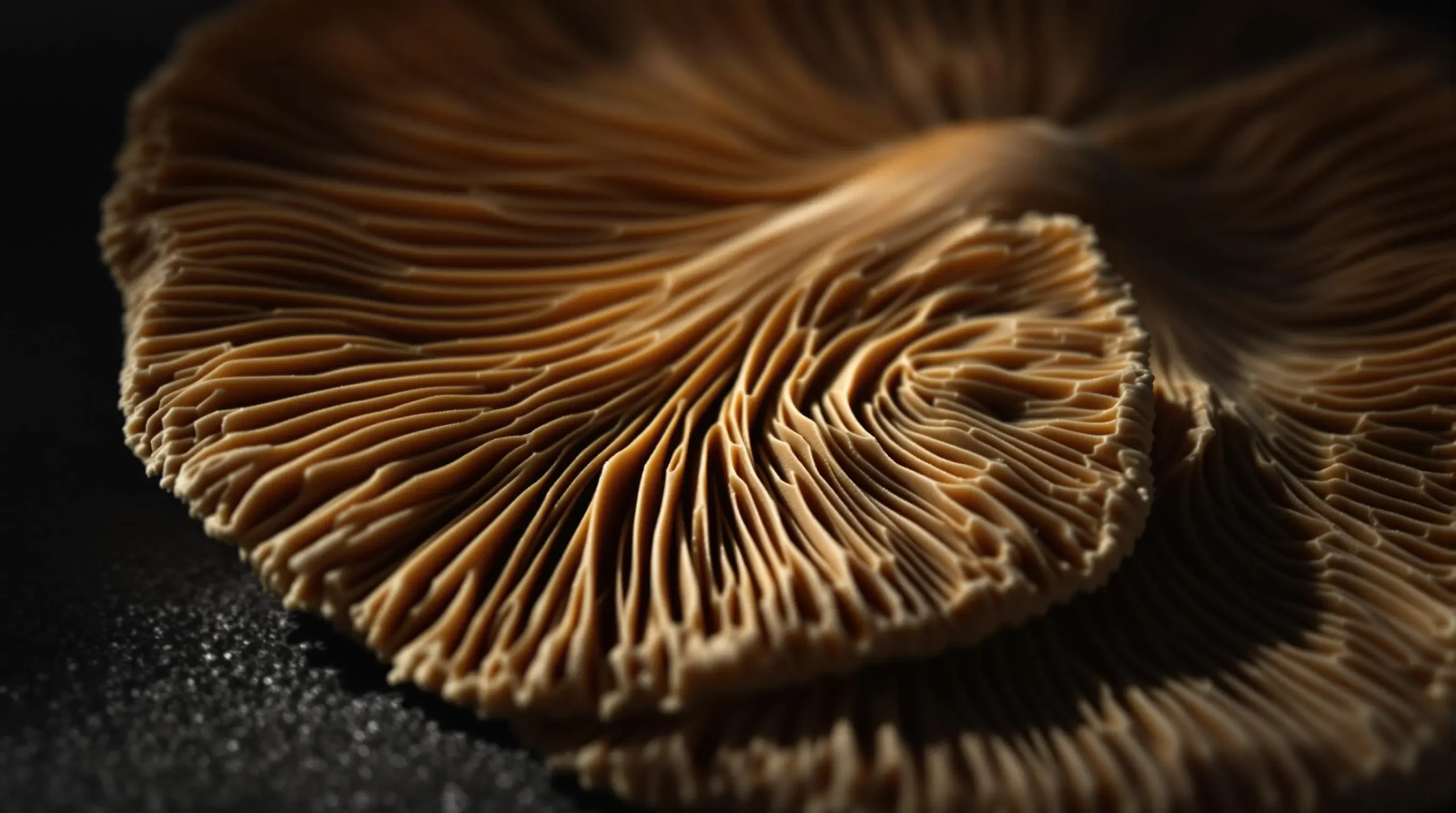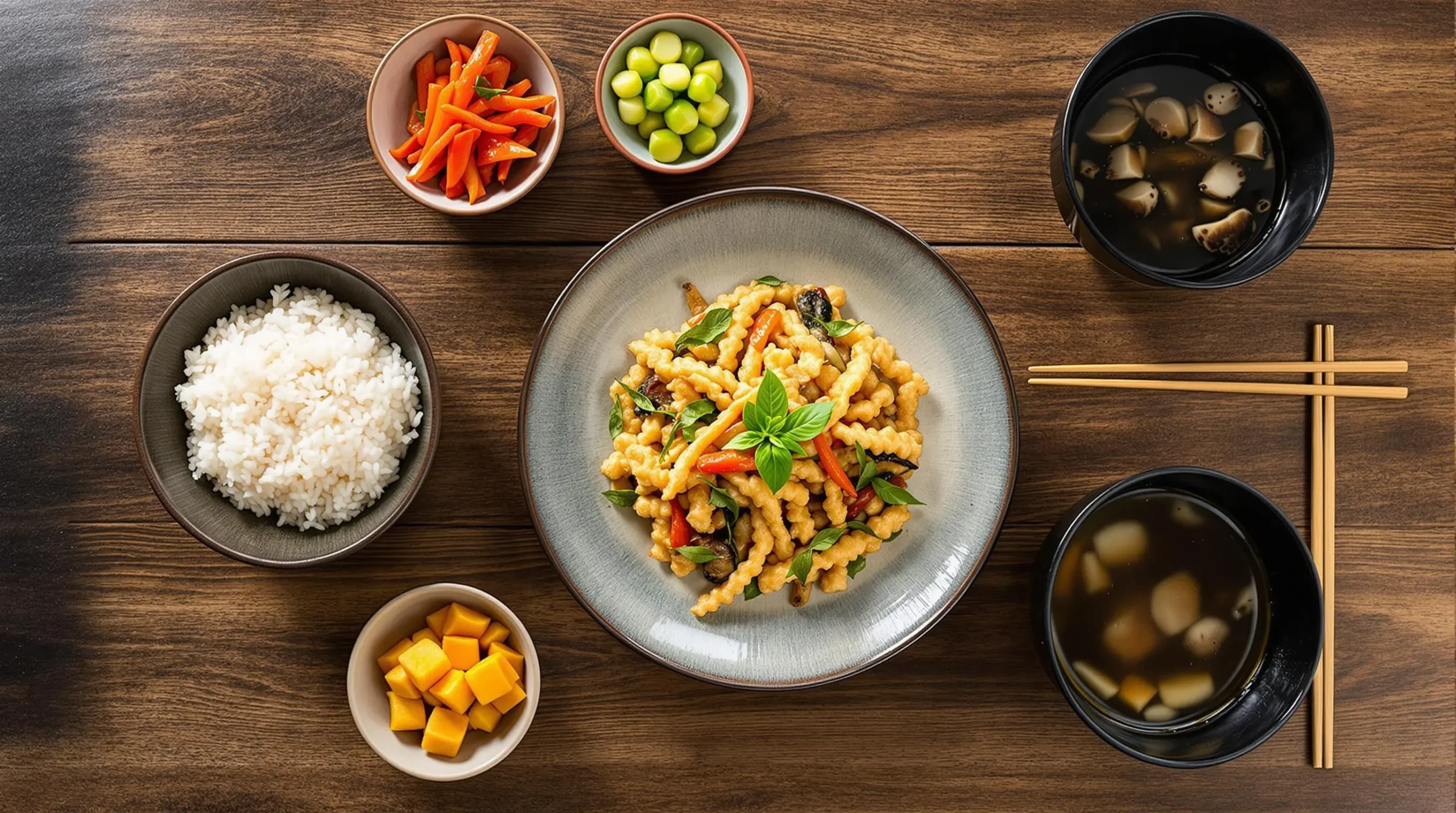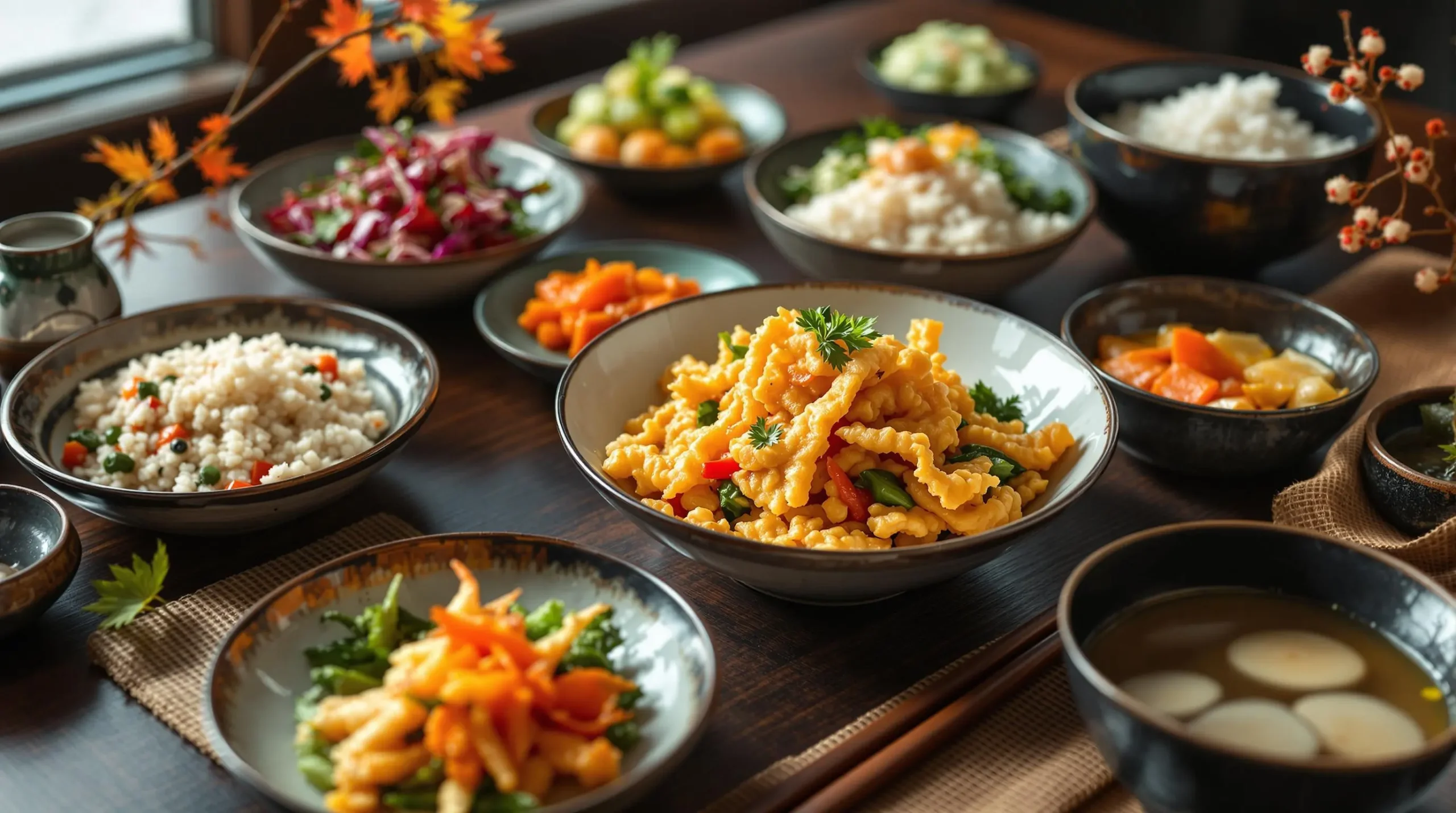The Art of Japanese Vegetarian Recipes
In the serene temples of ancient Japan, Buddhist monks perfected japanese vegetarian recipes that would influence the nation’s cuisine for centuries to come. These carefully crafted dishes transformed simple ingredients like tofu, shiitake mushrooms, and seasonal vegetables into masterpieces of flavor and presentation.
Traditional Japanese Vegetarian Recipes Today
The global food scene has embraced these time-honored cooking traditions, with restaurants and home cooks worldwide adapting classic japanese vegetarian recipes to suit modern tastes. Meanwhile, the fundamental techniques and core ingredients remain remarkably unchanged from their origins in temple kitchens.
Moreover, Buddhist temple cuisine, known as shojin ryori, has shaped Japan’s vegetarian cooking for over a thousand years. Today, this tradition continues to inspire chefs and food enthusiasts who appreciate the artful combination of textures and flavors. From delicate tempura vegetables to hearty kenchinjiru soup, these dishes showcase the versatility of plant-based ingredients.
And modern adaptations have introduced new ingredients while honoring traditional methods. Staples like miso, kombu seaweed, and daikon radish work alongside contemporary additions, creating exciting fusion dishes that respect their historical roots. Even as cooking styles evolve, the emphasis on seasonal ingredients and meticulous preparation remains at the heart of Japanese vegetarian cuisine.
Furthermore, as we explore these timeless recipes, we’ll discover how ancient Buddhist principles of mindful cooking continue to influence modern kitchen practices. Let’s begin by examining the essential ingredients that form the foundation of these remarkable dishes.
Understanding Shojin Ryori: Japanese Buddhist Vegetarian Cuisine
Philosophy and Principles
The art of shojin ryori emerged from Japanese Buddhist temples, where monks developed japanese vegetarian recipes that aligned with their spiritual practices. These cooking traditions began over 800 years ago, when Buddhist monk Dogen brought Zen teachings from China to Japan, introducing new approaches to temple cooking.
At its core, shojin ryori follows five essential principles that shape how ingredients are selected and prepared:
- Using ingredients in their entirety to prevent waste
- Incorporating five cooking methods in each meal
- Balancing five flavors (sweet, sour, salty, bitter, umami)
- Creating five colors (green, red, yellow, black, white)
- Following strict seasonal guidelines for ingredient selection
Furthermore, traditional japanese vegetarian recipes exclude several ingredients commonly found in Japanese cooking, such as:
- Garlic and onions
- Animal products
- Strong-smelling vegetables
- Alcohol in cooking
Essential Ingredients
Now, the foundation of temple cuisine relies on versatile plant-based ingredients. Tofu, available in several varieties like silken tofu and firm tofu, serves as a protein-rich base for many dishes. Konnyaku, a jelly-like food made from konjac root, adds unique texture to soups and stews.
Other fundamental ingredients include:
- Fu (wheat gluten) – both fresh and dried varieties
- Root vegetables like daikon, gobo (burdock), and satoimo (taro)
- Seaweed varieties such as wakame, nori, and kombu
- Mountain vegetables (sansai) including warabi (bracken fern) and zenmai (royal fern)

Cooking Techniques
Historically, traditional japanese vegetarian recipes employ specific cooking methods that enhance natural flavors without relying on strong seasonings. These techniques include:
- Nimono (simmered dishes)
- Aemono (dressed vegetables)
- Mushimono (steamed preparations)
- Yakimono (grilled items)
- Tsukemono (pickled vegetables)
Additionally, preservation techniques play a crucial role in temple cuisine. Methods like fermentation and pickling ensure ingredients remain available throughout the year, while shiokoji (salt koji) adds depth to simple vegetables.
And the mastery of these cooking techniques involves understanding how to balance flavors naturally. Rather than using heavy seasonings, chefs focus on drawing out the inherent tastes of each ingredient. For instance, dashi made from kombu seaweed creates a foundation of umami flavor without animal products.
Finally, Through careful attention to these principles, ingredients, and techniques, shojin ryori continues to influence modern Japanese cooking. As more people discover these traditional methods, the wisdom of temple cuisine finds new appreciation in contemporary kitchens worldwide.
Essential Japanese Vegetarian Recipes
Building on the principles of shojin ryori, modern japanese vegetarian recipes offer an exciting blend of traditional techniques and contemporary creativity. Let’s explore some of the most beloved dishes that showcase Japan’s plant-based culinary excellence.
Noodle Dishes That Define Japanese Vegetarian Cooking
The art of noodle-making holds a special place in japanese vegetarian recipes. Zaru soba, chilled buckwheat noodles served with a light dipping sauce, represents the elegant simplicity of Japanese cuisine. Traditional tsuyu sauce can be easily adapted using kombu and shiitake mushrooms instead of bonito flakes.
For heartier options, vegetable udon combines thick wheat noodles with seasonal vegetables in a rich kombu broth. Popular additions include:
- Crispy tempura vegetables
- Simmered kabocha squash
- Fresh spring onions
- Blanched spinach
- Grilled shiitake mushrooms
During summer months, cold somen noodles offer refreshing variations. These delicate wheat noodles can be served with:
- Ginger-infused dipping sauce
- Julienned cucumber
- Shredded nori
- Sesame seeds
- Tender microgreens
Rice-Based Dishes for Every Season
Rice dishes form another cornerstone of japanese vegetarian recipes. Vegetable sushi rolls, or makizushi, showcase the versatility of seasonal ingredients. Popular fillings include:
- Blanched asparagus
- Pickled daikon
- Grilled shiitake
- Cucumber and avocado
- Marinated kampyo (dried gourd)
Onigiri, traditional rice balls, welcome creative vegetarian fillings such as:
- Umeboshi (pickled plum)
- Seasoned kombu
- Grilled vegetables
- Pickled vegetables
- Tempura bits
Furthermore, rice bowls (donburi) adapt beautifully to seasonal toppings. Spring might feature tender bamboo shoots and mountain vegetables, while autumn brings mushrooms and roasted chestnuts.
Tofu Specialties: From Simple to Sublime
No exploration of Japanese vegetarian cooking would be complete without celebrating tofu dishes. Agedashi tofu presents crispy-fried tofu cubes in a delicate broth, while dengaku style covers grilled tofu with sweet miso glaze.
The vegetarian version of mapo tofu transforms the Chinese-inspired dish using:
- Crumbled firm tofu
- Fermented black beans
- Doubanjiang paste
- Fresh ginger
- Sichuan peppercorns
These recipes demonstrate how Japanese cuisine has mastered the art of creating satisfying meat-free dishes. Through careful preparation and attention to seasonal ingredients, these traditional recipes continue to inspire modern interpretations while maintaining their authentic roots.
Whether you’re crafting delicate noodle dishes, assembling creative sushi rolls, or exploring the many preparations of tofu, these dishes offer a window into Japan’s rich vegetarian cooking traditions. Each recipe carries forward the essence of temple cuisine while embracing contemporary tastes and preferences.
Modern Japanese Vegetarian Cooking
The evolution of japanese vegetarian recipes continues as creative cooks blend traditional methods with contemporary approaches. Today’s plant-based Japanese cuisine respects its roots while embracing new ingredients and techniques.
Adapting Traditional Recipes
Modern interpretations of japanese vegetarian recipes often begin with creating meat-free versions of classic dishes. For instance, traditional dashi stock can be crafted using:
- Dried shiitake mushrooms
- Kombu seaweed
- Dried daikon
- Roasted vegetables
- Sun-dried tomatoes
Furthermore, innovative meat substitutes have found their way into beloved dishes. Konjac-based products excellently replicate seafood textures, while mushrooms offer satisfying alternatives in dishes like:
- Vegetable sukiyaki
- Mushroom teriyaki
- Eggplant unagi
- Tofu katsu
- Vegetable gyoza
Fusion Recipes
As Japanese cuisine gains global popularity, chefs worldwide create exciting fusion dishes that honor traditional flavors. These contemporary japanese vegetarian recipes combine familiar ingredients with unexpected elements. Popular examples include:
- Tempura avocado sushi rolls
- Miso-glazed roasted vegetables
- Japanese curry pizza
- Matcha pasta dishes
- Wasabi-spiced veggie burgers
Additionally, Western cooking techniques have introduced new possibilities. For instance, air-fryer tempura offers a modern approach to classic preparation methods, while sous-vide cooking brings precision to tofu and vegetable dishes.
Meal Planning and Presentation
Traditional aesthetic principles continue guiding modern Japanese cooking. The concept of ichiju-sansai (one soup, three sides) remains relevant, though contemporary meals might feature:
- Main dish: Grilled tofu steak
- Side dishes: Pickled vegetables, blanched greens
- Soup: Clear mushroom broth
- Rice: Mixed grain varieties
Seasonal considerations still influence menu planning, with modern twists:
Spring:
- Cherry blossom-infused dishes
- Fresh bamboo shoots
- Wild spring greens
Summer:
- Chilled noodle bowls
- Grilled vegetables
- Cold tofu preparations
Fall:
- Mushroom-focused dishes
- Root vegetable stews
- Chestnuts and squash
Winter:
- Hot pot variations
- Warming curry dishes
- Hearty vegetable soups

Moreover, presentation remains crucial in contemporary Japanese dining. Modern plating often combines traditional elements with artistic innovation:
- Negative space usage
- Color contrasts
- Seasonal garnishes
- Height variation
- Textural elements
Through these adaptations, modern Japanese vegetarian cuisine continues evolving while maintaining its connection to traditional cooking principles. The result is an exciting blend of old and new that appeals to contemporary tastes while honoring centuries-old culinary wisdom.
Frequently Asked Questions About Japanese Vegetarian Recipes
Here are common questions about preparing japanese vegetarian recipes at home:
Q1: Can I make authentic Japanese food without dashi?
Absolutely! Traditional dashi can be replaced with plant-based alternatives. Try combining dried shiitake mushrooms with kombu seaweed for a rich umami base. Additionally, you can use roasted vegetables or dried daikon to create flavorful stocks that work perfectly in japanese vegetarian recipes.
Q2: What are the main protein sources in Japanese vegetarian cooking?
Japanese cuisine offers numerous plant-based protein options. Tofu appears in many forms – silken, firm, and fried. Other common sources include:
- Natto (fermented soybeans)
- Various types of fu (wheat gluten)
- Edamame (young soybeans)
- Tempeh (when making fusion dishes)
- Mushrooms like shiitake and maitake
Q3: How can I make Japanese vegetarian cooking more accessible?
Start with these practical tips:
- Stock basic pantry items like miso, soy sauce, and rice vinegar
- Use local vegetables when traditional Japanese ones aren’t available
- Begin with simple recipes like vegetable tempura or onigiri
- Join online communities for ingredient sourcing advice
- Make friends with Asian grocery store staff for recommendations
Q4: What’s the best way to balance flavors in Japanese vegetarian dishes?
Focus on these key principles:
- Combine different cooking methods in one meal
- Include all five basic tastes
- Add texture contrast through cooking techniques
- Use seasonal ingredients for peak flavor
- Balance hot and cold elements
Q5: Can I prepare these dishes in advance?
Many Japanese vegetarian dishes work well for meal prep. Consider these options:
- Prepare tsukemono (pickled vegetables) in batches
- Cook rice and freeze in portions
- Make dashi stock and store in the refrigerator
- Pre-cut vegetables for quick cooking
- Prepare sauces and dressings ahead of time
Remember, Japanese cooking emphasizes simplicity and seasonal ingredients. Start with basic recipes and gradually expand your repertoire as you become more comfortable with the techniques and flavors.
Embracing Japanese Vegetarian Cooking Traditions
Moreover, as we’ve explored the rich world of japanese vegetarian recipes, it’s clear that these time-honored cooking techniques offer endless possibilities for creative and satisfying meat-free meals. From the mindful practices of shojin ryori to modern fusion interpretations, Japanese vegetarian cuisine continues to evolve while maintaining its core principles.
The key to success with japanese vegetarian recipes lies in understanding and applying fundamental concepts:
- Respecting seasonal ingredients
- Mastering basic cooking techniques
- Balancing flavors and textures
- Practicing mindful preparation
- Presenting dishes thoughtfully
Whether you’re new to Japanese cooking or an experienced chef, remember that these traditions developed over centuries through careful observation and practice. Start with simple dishes like vegetable tempura or onigiri, then gradually explore more complex preparations as your confidence grows.
To continue your culinary journey, consider these practical steps:
- Build a basic Japanese pantry with essential ingredients
- Practice fundamental techniques like making kombu dashi
- Connect with other cooking enthusiasts through local classes or online communities
- Experiment with seasonal ingredients available in your area
- Document your cooking experiences and adjust recipes to your taste
Finally, reemember that authenticity in Japanese cooking comes not just from using traditional ingredients, but from embracing the underlying philosophy of respect for ingredients and attention to detail. Even when making substitutions or creating fusion dishes, maintaining these principles will help you create memorable meals.

Finally, as you explore these recipes, don’t be afraid to make them your own while respecting their origins. The beauty of Japanese vegetarian cuisine lies in its adaptability and emphasis on natural flavors. Through practice and patience, you’ll develop an intuitive understanding of these cooking traditions, allowing you to create dishes that honor both classical techniques and contemporary tastes.

